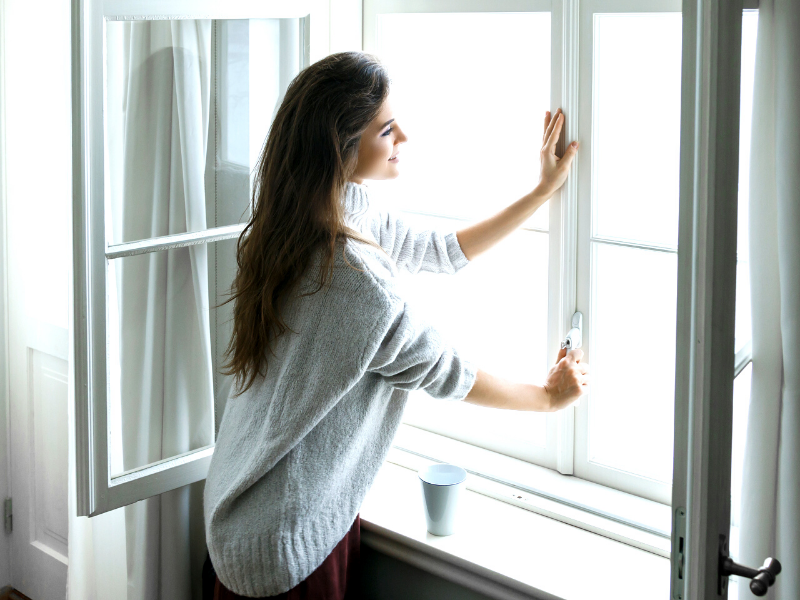Protecting Your Home’s Air Quality
Most of us tend to think of air pollution as something that occurs outdoors where car exhaust and factory fumes proliferate, but there’s such a thing as indoor air pollution, too. Since the 1950s, the number of synthetic chemicals used in home products have increased drastically, while homes have become much tighter and better insulated. As a result, the EPA estimates that Americans, on average, spend approximately 90 percent of their time indoors, where the concentrations of some pollutants are often two to five times higher than typical outdoor concentrations.
Luckily, there are many ways to reduce indoor air pollution. We all know that buying organic and natural home materials and cleaning supplies can improve the air quality in our homes, but there are several other measures you can take as well.
How pollutants get into our homes
Potentially toxic ingredients are found in many materials throughout the home, and they leach out into the air as Volatile Organic Compounds, or VOCs. If you open a can of paint, you can probably smell those VOCs. Mold is a VOC that can build up in the dampest parts of your home like the laundry room or crawl spaces. Another example is the “new car smell” that seems to dissipate after a while, but VOCs can “off-gas” for a long time, even after a noticeable smell is gone.
Many materials used to build a home contain chemicals like formaldehyde, toluene, xylene, ethanol, and acetone, and even lead. VOCs can also be in the form of pet dander or dust. Fortunately, VOCs from building materials dissipate over time. For that reason, the highest levels of VOCs are usually found in new homes or remodels. If you are concerned about VOCs, there are several products you can buy that are either low- or no-VOC. You can also have your home professionally tested.
How to reduce VOCs in your home
Choose your building materials wisely
- – Use tile or solid wood for flooring—hardwood, bamboo, or cork
- – Choose solid wood or outdoor-quality plywood that uses a less toxic form of formaldehyde.
- – Choose low-VOC or VOC-free paints and finishes
Purify the air
- – Make sure your rooms have adequate ventilation, air out newly renovated areas for at least a week
- – Clean ductwork and furnace filters regularly
- – Install air cleaners if needed
- – Use only environmentally responsible cleaning chemicals
- – Plants are a natural solution to help clean the air
- – Air out freshly dry-cleaned clothes or choose a “green” cleaner
Pick the right carpet
- – Choose “Green Label” carpeting or a natural fiber such as wool or sisal
- – Use nails instead of glue to secure carpet
- – Install carpet LAST after completing painting projects or wall coverings
- – Air out newly carpeted areas before using
- – Use a HEPA vacuum or a central vac system that vents outdoors
Prevent mold
- – Clean up water leaks fast
- – Keep humidity below 60 percent, using dehumidifiers if necessary
- – Refrain from carpeting rooms that stay damp
- – Insulate pipes, crawl spaces, and windows to eliminate condensation
- – Use one-half cup of bleach per gallon of water to kill mold in its early stages
If you would like to learn more about VOCs and indoor air quality, please visit http://www.epa.gov/iaq/.
The post Protecting Your Home’s Air Quality appeared first on Fort Collins Real Estate | Fort Collins Homes for Sale & Property Search.




